By Rick VanSickle
What’s more important to you as an Ontario wine lover, where the grapes come from or who made it?
Also in this Ontario Wine Report: Gold medalist Hayley Wickenheiser named guest speaker at the GGO’s Celebrity Luncheon, plus our picks from Saturday’s Niagara wine release at Vintages stores, including Black Bank Hill, Bachelder Wines, Henry of Pelham and Flat Rock Cellars.
For a small but increasingly curious cadre of wine brands, the vineyard is paramount and deserving of top billing on the label. This isn’t new in the wine world, think Burgundy, where place is noted above all else on the label and neither Chardonnay nor Pinot Noir is even mentioned anywhere on the bottle.
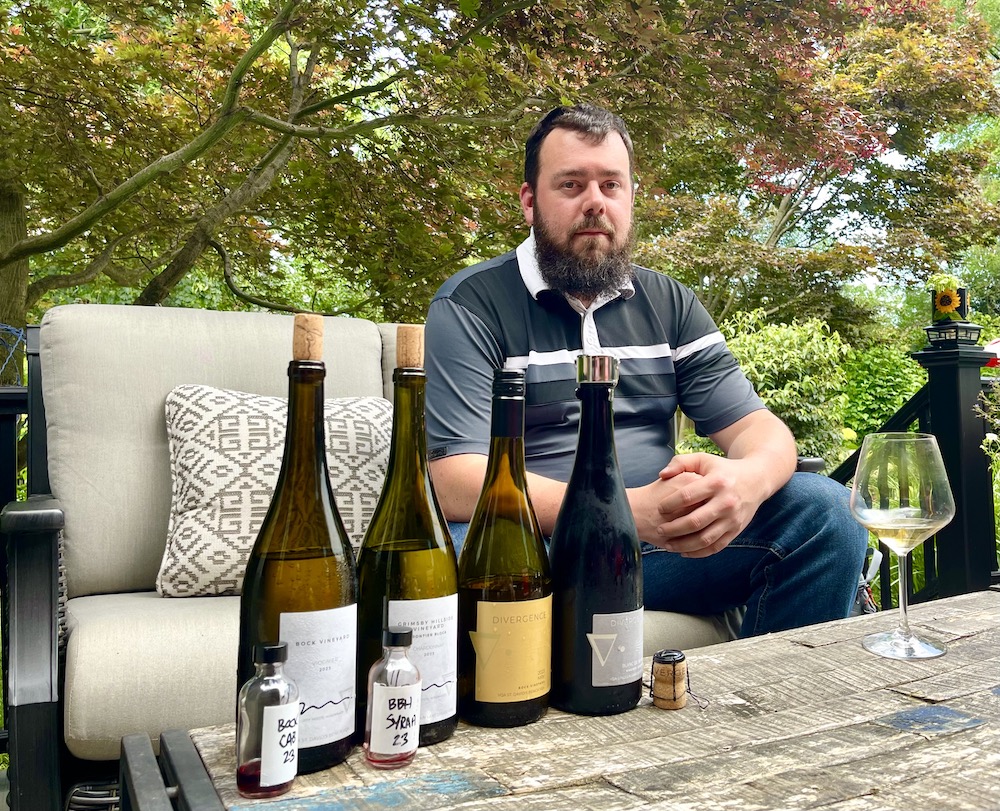
In Bordeaux, it’s a far different approach, with the chateau taking precedence, followed by the region or sub-region and then the hierarchy (first growth to fifth growth and on down the line). Nowhere on the label does it mention what grapes are used in the blend for either the reds (Cabernet Sauvignon, Cabernet Franc, Merlot, Petit Verdot and Malbec) or the whites (Sauvignon Blanc and Semillon). If you know, you know, if you don’t, well, you can Google it.
In Niagara, a small group of terroir-minded winemakers are getting quite comfortable with a Burgundian approach to labelling. Think Thomas Bachelder (below) and all his single-vineyard Chardonnays, Pinot Noirs and Gamays. The vineyard gets centre stage on the label with producer and grape varieties playing a lesser role. And he pushes it even further by giving some of his wines “cru” or “grand cru” status, a cheeky, self-appointed (and borrowed) term he bestows on those vineyards he deems best express where they come from, right down to single blocks within blocks.
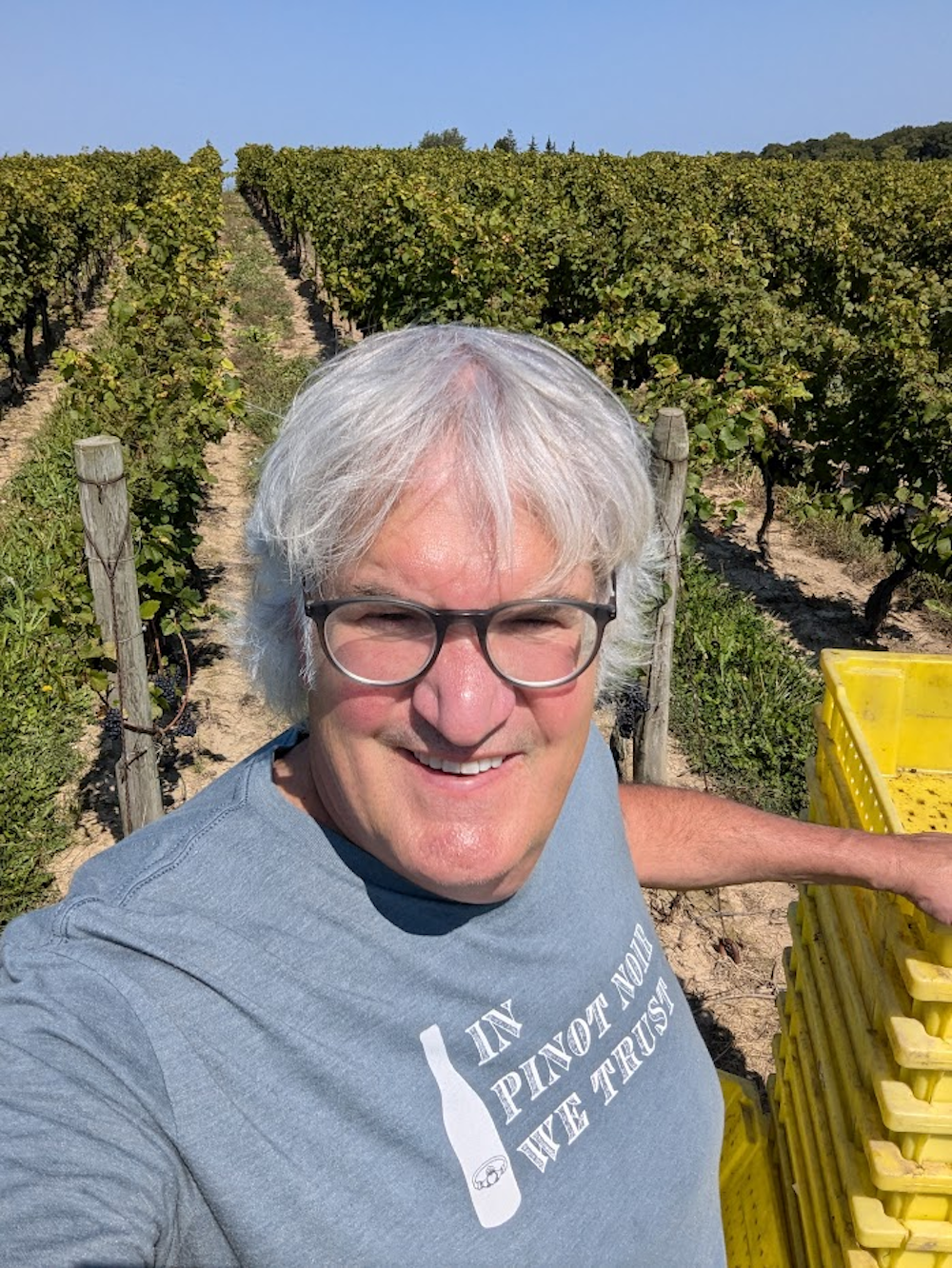
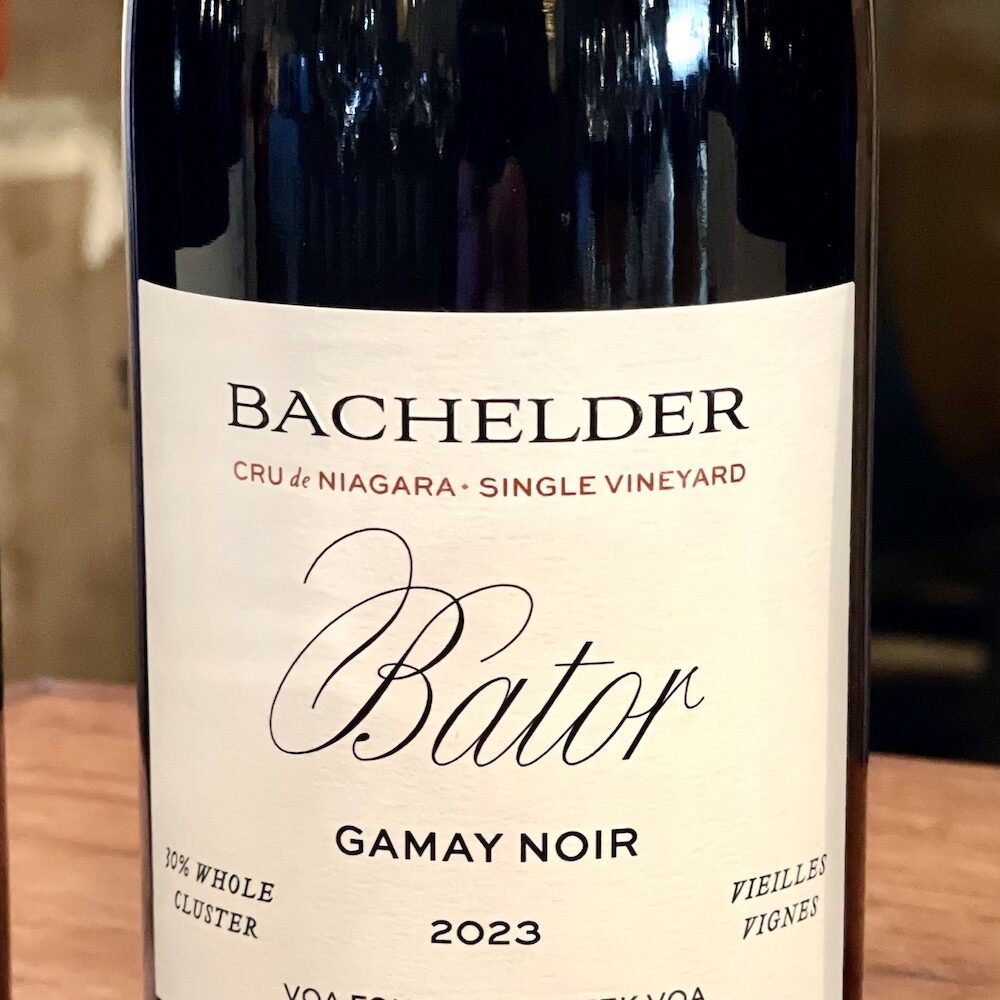
No other winemaker in Niagara knows the terroir of Niagara better than Bachelder, who has been carving up vineyards, blocks, and rows within blocks since 2009 under his own label with his wife Mary Delaney and as the founding (and current) winemaker at Le Clos Jordanne, beginning in 2005.
With the 2021 La Toussaint release, he caused a bit of stir with a bold label redesign that started with the spring Gamay release and is now complete for the entire production. The vineyard takes top billing on the new labels with the name Bachelder in smaller type and the estate’s logo relegated to the back label. “We wanted to get the vineyards front and centre,” said Bachelder at the time. “So, we leaned into this most agreeable task with the goal of first branding place and secondly, sensitizing wine lovers as to its importance. We trust and hope that you will like the European flourish, and artful minimalism of our labels.” You will find more details of what’s in the bottle in the wings of the label left and right and through a bar code on the back of the bottle, which also features a map of where the vineyard is located.
Bachelder also said that “Niagara Cru,” or the French term lieu-dit, refers to a vineyard-specific location. “What we are doing is using cru as a single vineyard, not affixing any level to it,” said Bachelder. “We’re not pretending it’s a premier cru,” he adds, referring to the French system of assigning “levels of quality” to certain iconic vineyards. We will take Bachelder’s word for that, but other winemakers in Niagara have taken note and are following suit.
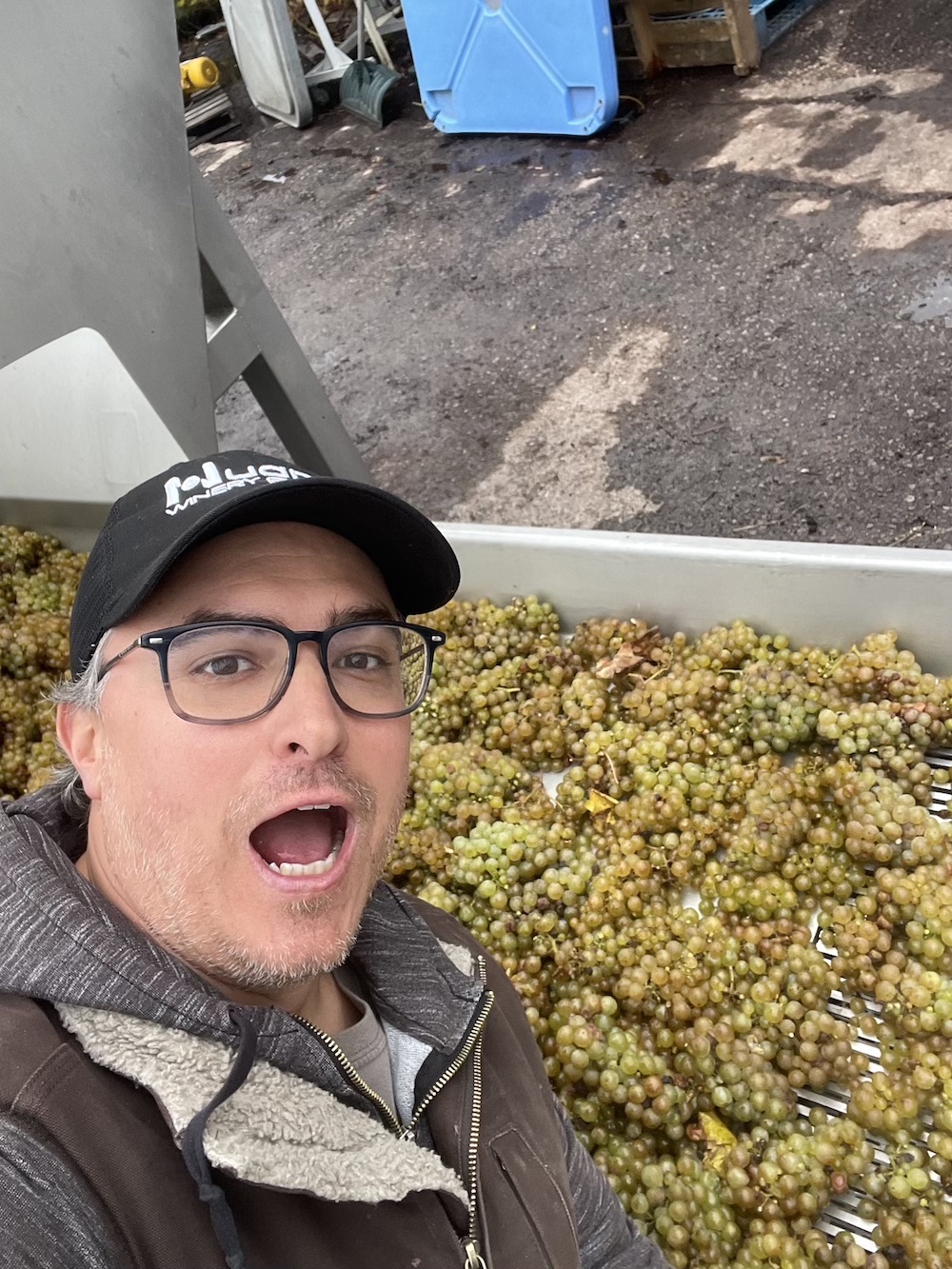
![]()
While some of the labels for Mark Pistor’s (above) Fogolar brand focuses on the sub-appellation first, then the specific vineyard, then the grape variety and finally the producer, consumers will see a big change beginning with the 2023 labels that will feature a vineyard first approach, followed by sub-app and producer, much like what Bachelder is doing with his single-vineyard wines and what Burgundy has always done. It’s a bold move and pushing the envelope, but not breaking any VQA labeling rules, however, I would be surprised if the regulator isn’t watching this carefully. For Pistor, he says “it’s easier to talk about the vineyard then to talk about the sub-appellation.”
Enter Jeff Moote, proprietor and winemaker for his brand Divergence Wines, and a fellow member the trés cool Collab Wine and Beverage group with Pistor. He is just introducing his “Signature” series of terroir-driven wines (a Chardonnay, Viognier and upcoming Syrah) that features a simple front label naming the vineyard first, the grape and vintage second and the sub-appellation last with Moote’s signature (illegible, by the way) the largest graphic on the label. The only indication of the brand is on the back label.
Moote is banking on consumer knowledge for his small lot Signature wines and takes great pride in the premium vineyards where he sources his grapes. He believes these top expressions are a direct reflection of where the grapes are grown and he takes a minimalist approach to letting the wine express itself without tricks or excessive oak treatment.
We have reviews of two of the new Signature wines, plus a new sparkling wine and a retaste of the first VQA-approved Roussanne blend from Divergence. You can buy the wines here. Here’s what I liked:
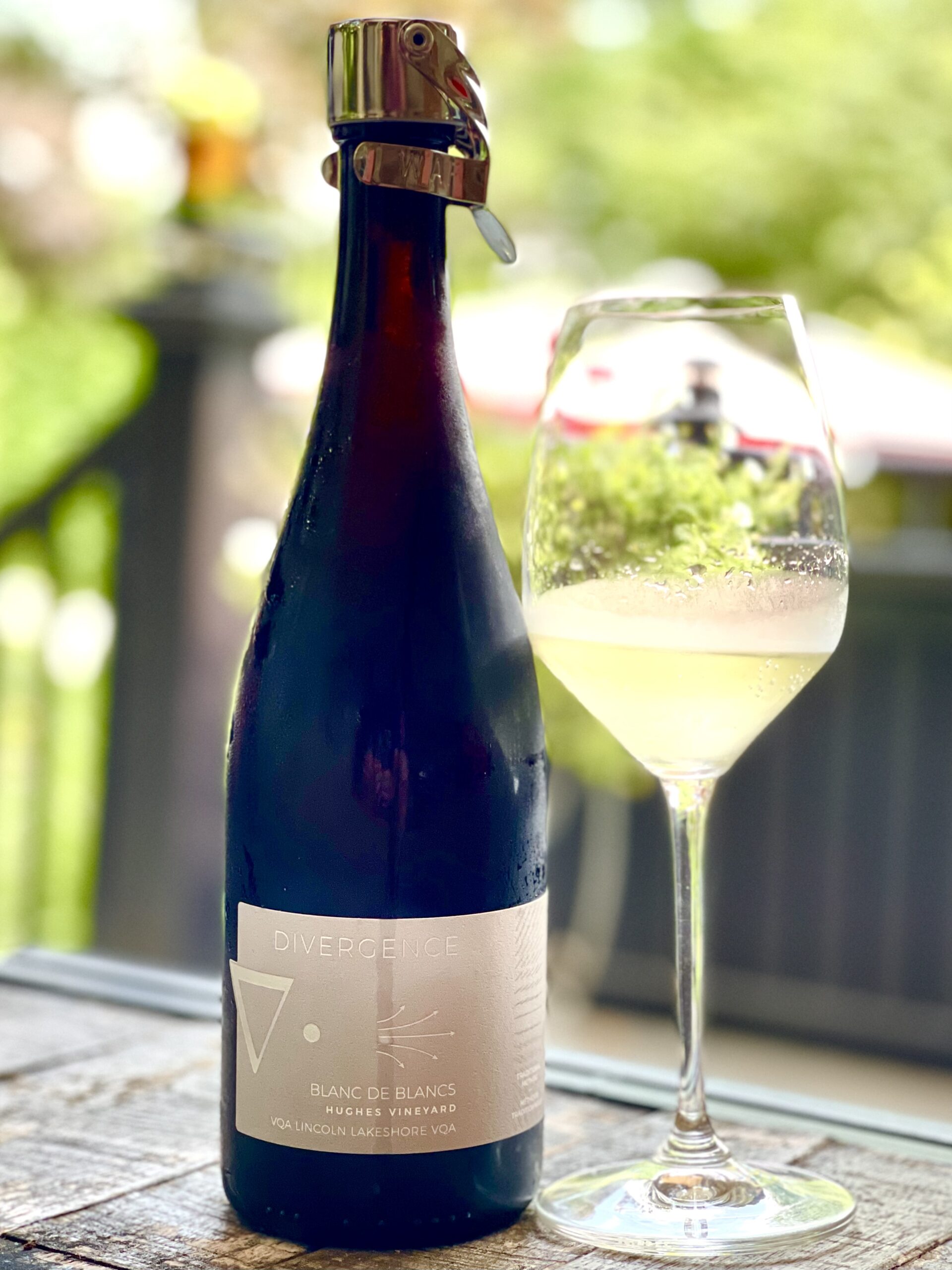
Divergence Blanc de Blancs 2020 ($75, 93 points) — Moote continues to expand his sparkling chops with this fine 100% Chardonnay sourced from the Hughes Vineyard. It spent 42 months on its lees with the base wine barrel fermented pre-triage and had a 2% dosage of its own base wine. The nose picks up all those lees aging notes, along with flint and saline followed by toasty brioche, vibrant lemon, green apple, and pear skin with an elegant bead in the glass. There’s a persistent bubble on the palate that elevates the apple, quince and lemon fruits with toasted almonds, flint, warm brioche and sizzling acidity on a long, bright finish. “I like the intensity,” says Moote, “it comes through in the Chardonnay character.”
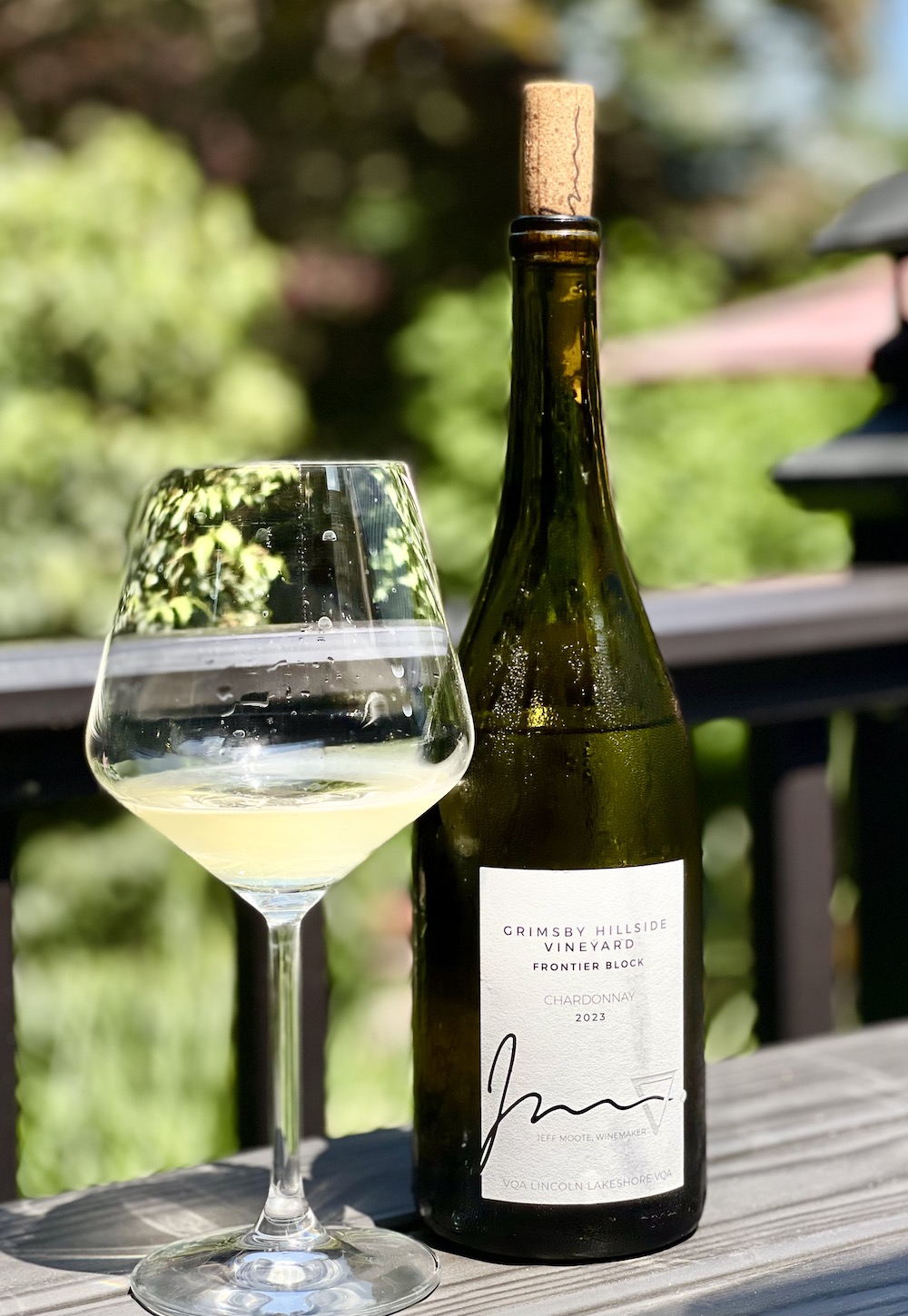
Divergence Signature Series Grimsby Hillside Vineyard Chardonnay 2023 ($53, only available during i4C, then wine club members, bottle shops, and select public releases, 93 points) — This is sourced from the Frontier Block in the Grimsby Hillside Vineyard where all the cool kids get their grapes. It’s whole cluster pressed and wild fermented before being aged in 100% French oak barriques (a combination of new and used barrels) for 17 months. “We’re just trying to reflect the vineyard, the purest expressions,” says Moote. This Chardo represents the epitome of the Grimsby Hillside Vineyard with a nose of white flowers, saline, wet stones, pure pear, yellow apples, lemon chiffon and elegant oak spice notes. It’s quite rich and textured on the palate with ripe orchard fruits, flinty/stony/chalky accents, citrus zest, creamy notes, a touch of spice and a zippy, lifted and long finish. Can cellar through 2032. A beauty.

Divergence Signature Series Bock Vineyard Viognier 2023 (wine club only, 94 points) — The Bock Vineyard is located in the St. David’s Bench sub-appellation. This is a selection of the best of the three barrels of Vio. There is some French oak aging here (30% new oak) for 10 months, plus a further 10 months in bottle. This makes a big statement on the nose with ripe apricots, white peach, mango, honeysuckle, poached pear, nectarine and nutmeg spice. This Vio is generous and full-bodied on the palate with bold exotic flavours of apricot tart, nectarine, mango, poached pear, a touch of reduction, lanolin/stony minerality and spice that comes at you in layer after layer through a long, rounded finish. One of the best Viogniers I have tasted from Ontario.
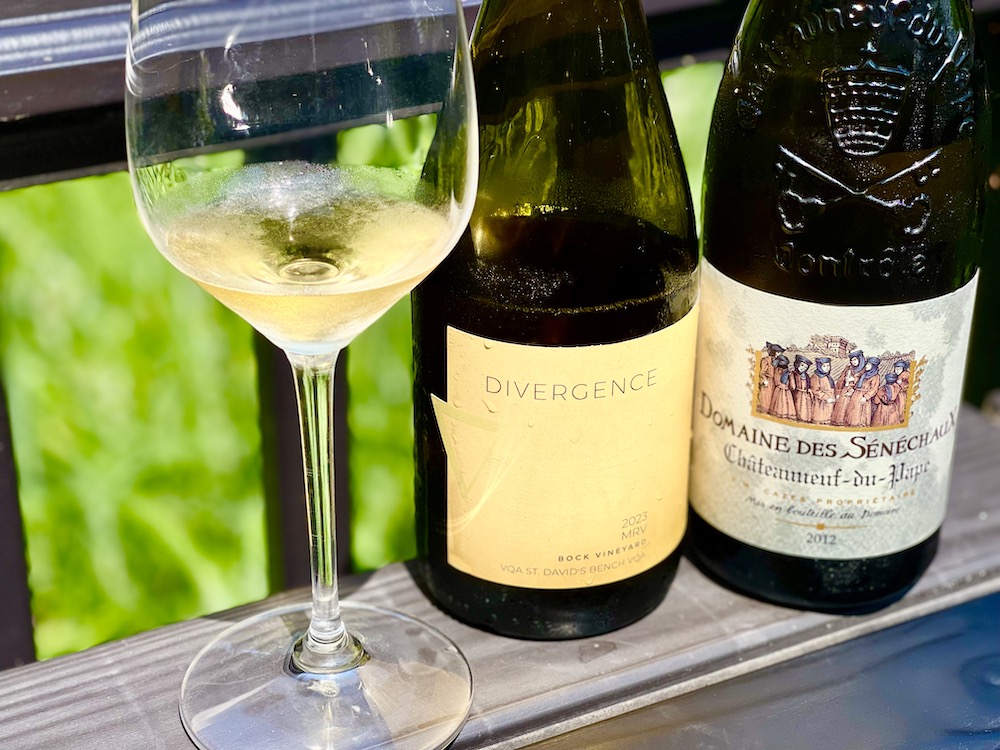
Divergence MRV 2023 ($33, retasted beside a Rhone Chateauneuf-du-Pape, 94 points) — Roussanne makes up 32% of this Rhone variety blend with rest consisting of 39% Marsanne and 29% Viognier from the Bock Vineyard. It is Niagara’s first Roussanne blend that is officially VQA approved. Wines in Niagara reviewed this wine previously but wanted to see if there are any similarities to the white blends from the Rhone. I pulled out a 2012 Domaine des Sénéchaux Blanc, a blend of 33% Roussanne, 29.5% Clairette, 29.5% Grenache Blanc and 8% Bourboulenc. Not exactly the same, but the percentage of Roussanne is close in both bottlings and there was a nice similarity between the two wines despite the 10-year age gap.
For Moote’s Rhone blend, the Viognier was pressed separately, while Marsanne and Roussanne were pressed together on top of the Viognier skins. It was all whole cluster pressed, juice was settled and racked to barrel for fermentation and aging for 10 months (no new oak) before blending and bottling. This a more traditional three-variety Rhone blend that is just gorgeous, exciting even, with a generous, rich nose of apricots, guava, orange zest, saline minerality in spades, wild herbs, marzipan, lemon curd, and a touch of vanilla spice. It has a creamy texture on the palate with succulent tropical fruits, apricot tart, lemon squares, orange peel, cantaloupe, wild honey, saline freshness and a rounded, luxurious finish with mouth-watering acidity.
Olympic gold medalist Wickenheiser
guest speaker GGO’s Celebrity Luncheon

The Grape Growers of Ontario’s Celebrity Luncheon marks the opening of the Niagara Grape and Wine Festival by showcasing Canadian personalities and celebrating the annual grape harvest.
This year, the GGO is welcoming one of the most decorated female athletes in Olympic history, Dr. Hayley Wickenheiser, as its guest speaker.
Wickenheiser is a four-time Olympic gold medalist, six-time Olympian in two sports (hockey and softball), and a trailblazer in the world of sport and leadership. Inducted into the Hockey Hall of Fame as a first-ballot nominee, Wickenheiser has also made history as the first woman to register a point in a men’s professional hockey game and to participate in or coach at four NHL development camps.
Today, she serves as the assistant general manager of player development for the Toronto Maple Leafs, while also practicing family and emergency medicine and inspiring audiences as a bestselling author, speaker, and leader.
Recognized globally for both her athletic excellence and community service, Wickenheiser has been named one of Sports Illustrated’s “Top 25 Toughest Athletes in the World” and twice appeared on their “Power 50 in Sports” list. She is a recipient of Canada’s highest civilian honour, the Order of Canada, and has been inducted into Canada’s Sports Hall of Fame, Canada’s Walk of Fame, and the Saskatchewan Sports Hall of Fame.

Her commitment to giving back is reflected through her involvement in numerous charitable organizations including Right to Play, Jumpstart, Project North, and KidSport, and through her founding of the Canadian Tire Wickenheiser World Female Hockey Festival, which mentors young athletes from around the world. Wickenheiser also holds several honorary degrees and a Master’s in Kinesiology from the University of Calgary, where she studied medicine.
“We are honoured to welcome Dr. Hayley Wickenheiser to the Grape Growers of Ontario Celebrity Luncheon on Sept. 17 as we kick off the 2025 Grape and Wine Festival, said Debbie Zimmerman, GGO CEO. “Her remarkable achievements and commitment to leadership, community, and excellence make her an inspiring addition to this year’s celebration.”
The luncheon is on Wednesday, Sept. 17, at 11:30 a.m. at Club Roma in St. Catharines. Ticket order forms are available at here or by contacting the GGO Board office at (905) 688-0990 or info@grapegrowersofontario.com.
Our picks from the Niagara wines
coming to Vintages stores on Saturday

Black Bank Hill Cabernet Franc 2022 ($40, 93 points) — “2022 is the year that Black Bank Hill showed us what Black Bank Hill is all about,” says winery owner Taylor Emerson. With the arrival of winemaker Jonathan McLean, the completion of the winery and fruit primarily from the estate vineyard, Emerson pointed to the 2022s as the style of wines the winery will strive for going forward. The estate Cab Franc is a good example of that direction. The wine was wild fermented and aged for 20 months in a mix of used and neutral French oak barrels before being bottled unfined and unfiltered. I love this old-style Cab Franc with its nose of minty/eucalypt, fresh red berries, graphite, wild blueberries, herbs and lifted barrel spices. It’s rich and concentrated on the palate and leaning more toward the darker fruits of anise, blueberries and plums, with that lovely minty accent, fine tannins, solid structure, black tea notes and spice on a lifted, long finish. Can hold this wine through 2033
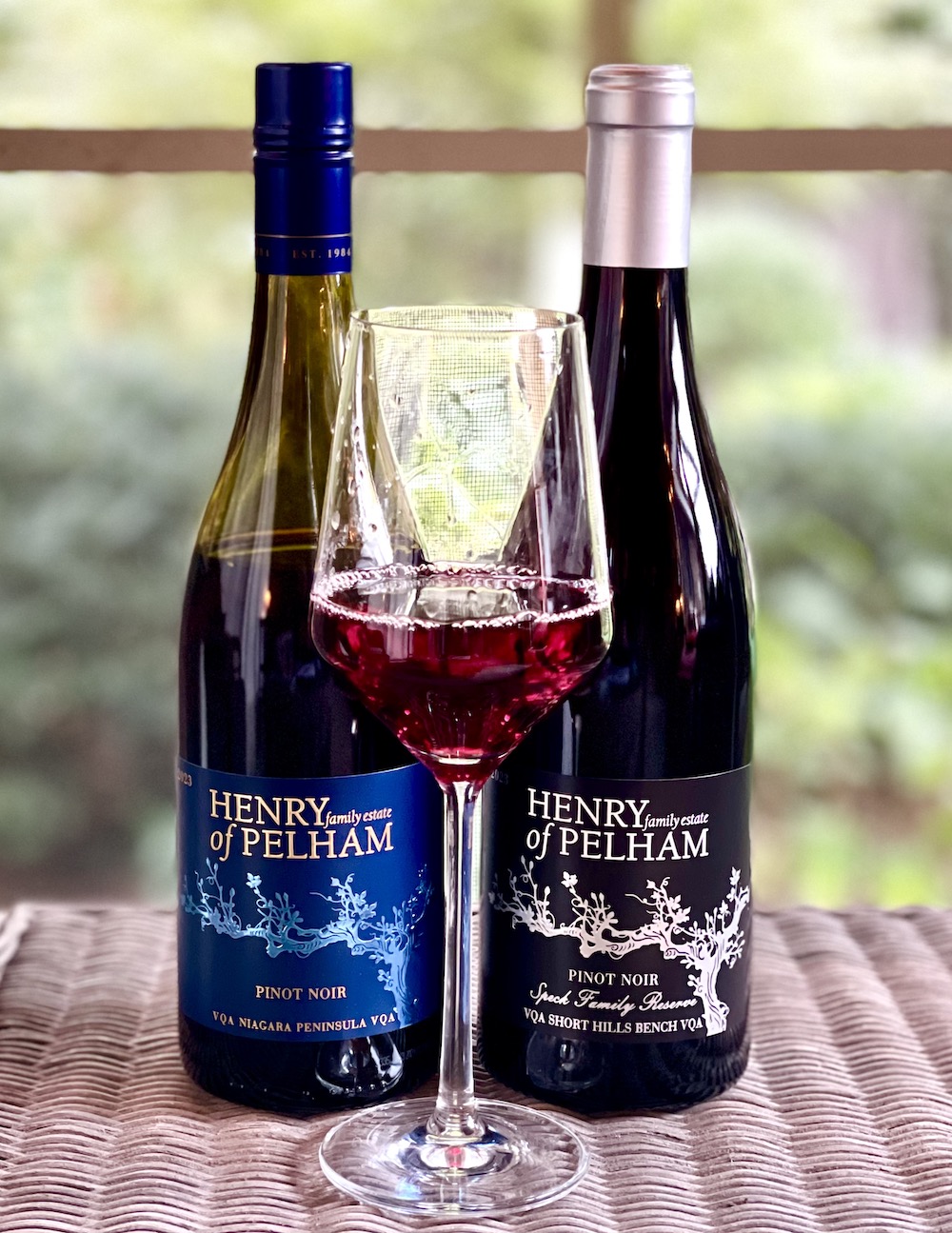
Henry of Pelham Speck Family Reserve Pinot Noir 2023 ($48, 93 points) — This is the top expression of Pinot at Henry of Pelham from the Old Farm Block 100 planted between 1998 and 2006. The wine was aged in European oak, 30% new, for 10 months. It has such a beautiful, lifted nose of brambly raspberry perfume, cherry/kirsch, strawberries, violets, cassis and fine oak spice. It has wonderful texture on the palate and persistent flavours from the medley of red berries, anise, red currants and spice box with a long, finessed finish. A gorgeous expression of cool climate Pinot Noir that can improve in the cellar until 2028.

Bachelder Willms Vineyard les Naturistes 55% Whole Cluster Cru Gamay Noir 2020 ($30, 92 points) — Says Thomas Bachelder: “Les Naturistes is out there naked, because we never push it to be something it isn’t, we never over-extract, we just let it be.” The nose reminds me of that first raspberry pick of the year that we get here in Niagara, and the smell that wafts from roadside fruit stands. That and some subtle red flowers and savoury/earthy/meaty accents. There is some complexity on the palate and some tannic grip to go with all that pure raspberry goodness and complementing meaty/savoury notes on a lifted finish. Nice to see a perfectly aged Gamay from Bachelder come to Vintages stores.
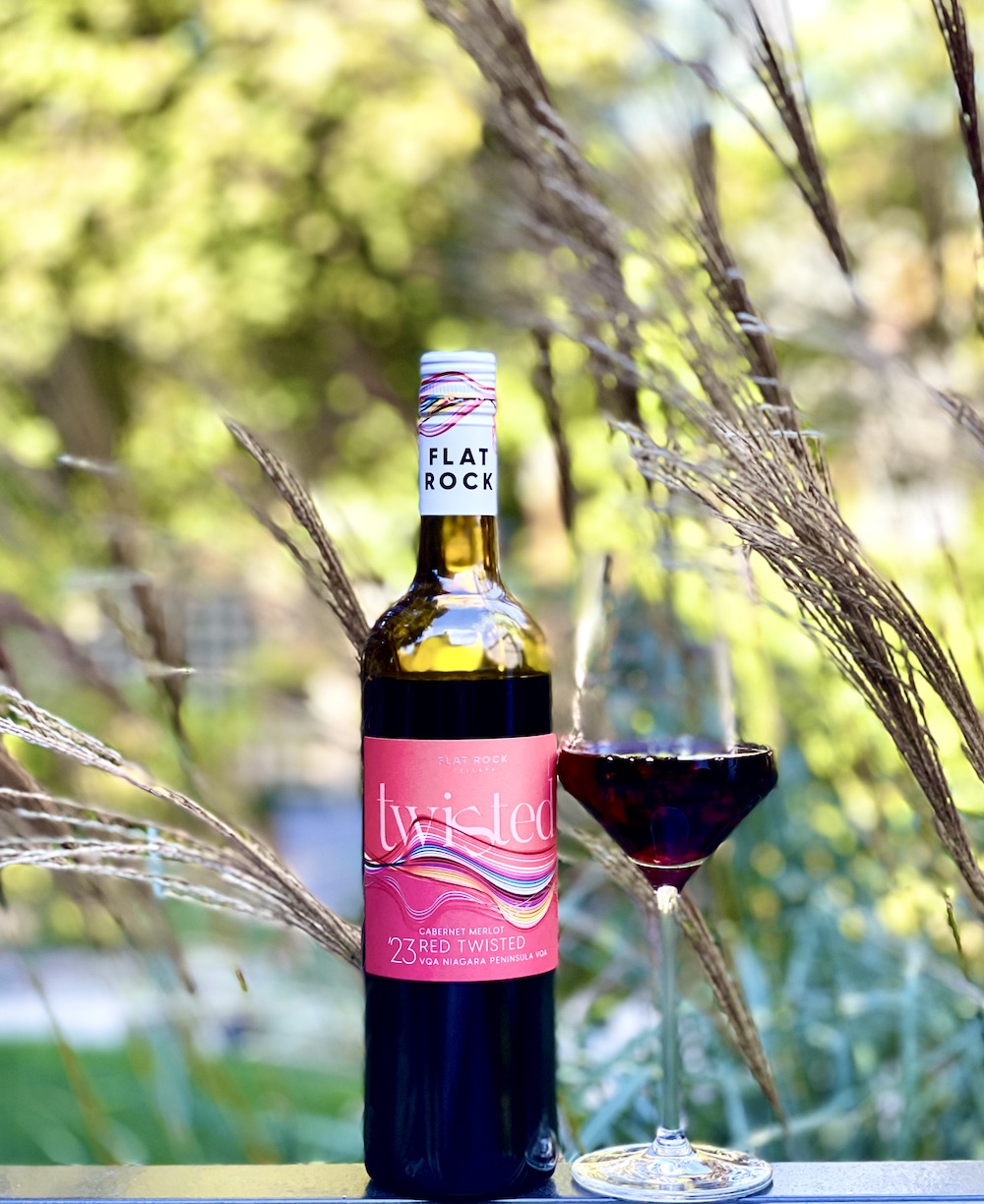
Flat Rock Red Twisted 2023 ($20, 89 points) — For the 2023 Red Twisted, the winemakers envisioned a Twenty Mile Bench marriage of single-vineyard Wismer sourced Cabernet Franc (60%) with single-vineyard Merlot (40%) from a parcel 500 meters away from the Flat Rock winery. The components were vinified separately, brought together and aged in a combination of French and American oak. It has a rich and savoury nose of brambly raspberries, dark cherries, black currants, anise, toasty vanilla and spices. With the ripe tannins on the palate adding structure, the melange of savoury red and dark berries shines through in spades, with a lovely splash of herbs of spices on a vibrant finish. Good value red blend chock full of personality.
Other Niagara wines released, but not reviewed by Wines in Niagara:
• Charles Baker Laundry Vineyard Riesling 2023
• Hare Pinot Grigio 2021 ($26)
• Featherstone Gemstone 2023 ($18)
• Inniskillin Montague Vineyard Chardonnay 2022 ($35)
• Konzelman Barrel Aged Reserve Series Chardonnay 2022 ($25)
• Inniskillin Montague Vineyard Pinot Noir 2022 ($36)
• Nomad Wanderlust 2021 ($26)
• Redstone Gamay Noir 2021 ($24)
• Domaine Queylus Rosé 2024 ($25)
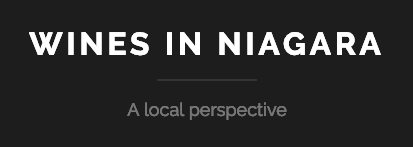

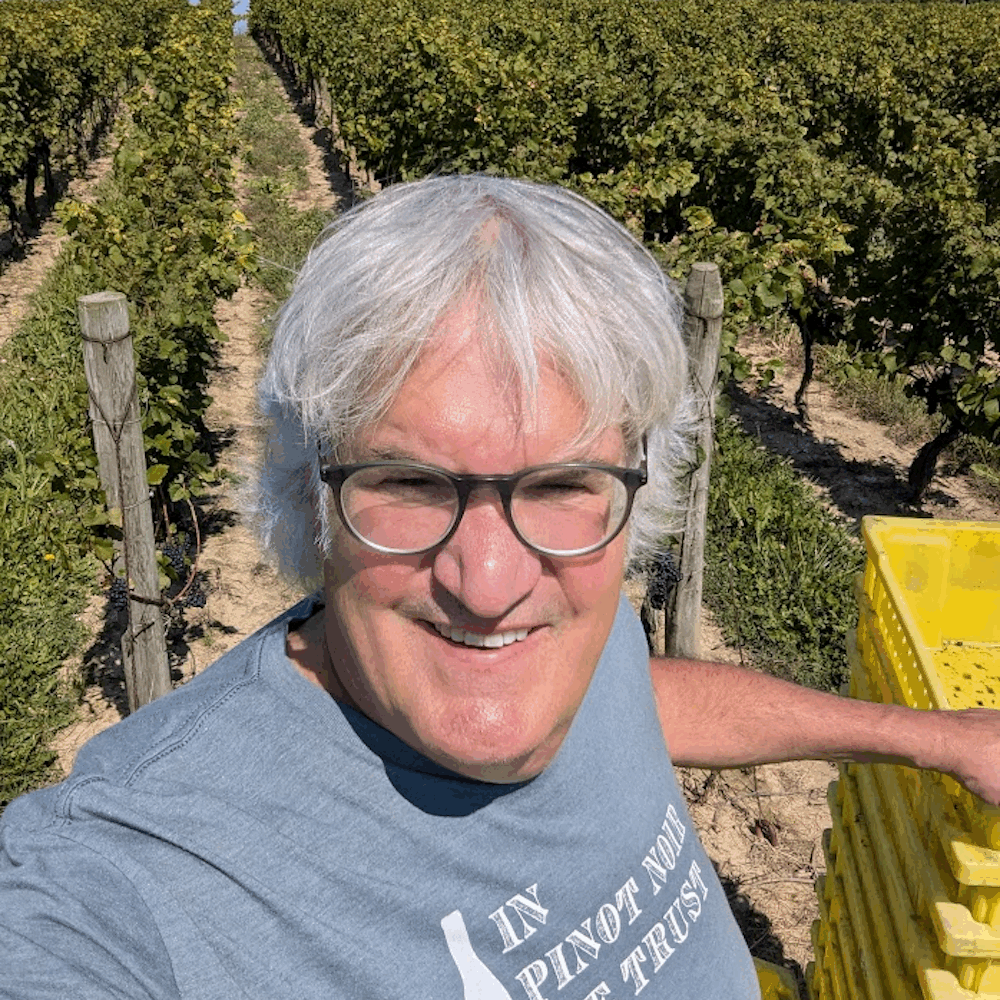






Comment here